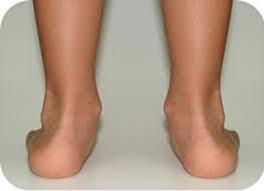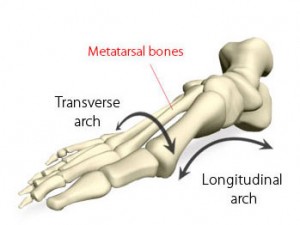How Over Pronation and flat feet affect us.
The biomechanics of the gait cycle. The heel strike, the mid-stance and the toe-off. The majority of our stance is the mid stance phase of gait, while the other foot is in the swing phase of gait. One of the more common problems people have with their feet is called: Over Pronation or hyperpronation is a collapse of the inside part of the foot sinks down causing a outward rotation of the lateral foot. This can also be referred to as Valgus and changes the contact point of the heel on the ground. Some of the symptoms associated with hyperpronation include:
flat feet, arch pain, Bunions, Neuromas, heel spurs, medial rotation of the knee, lower back symptoms, foot flare, achilles tendon bowed inward and tendinitis. 
Custom made orthotics that support all three arches of the foot and levels the foot helps prevent and treat these common issues. One of the ways to tell if you hyperpronate is to look at the bottom of a pair of your old shoes. If the medial portion of the sole of the shoe is worn excessively more than the outside part, you have hyperpronation. A chiropractor can observe the person as they walk and identify the inner foot sagging down as the person puts weight on that foot. This is exacerbated by the more weight that is placed on the foot, such as: weight gain, pregnancy, prolonged standing, unsupported shoes and running. Another way to tell if someone over pronates is by looking at their achilles tendon, if they bow inward you have hyperpronation. Hyperpronation can also cause a change in the angle of the knee and hips. Over time this produces pain at these areas and many times is misdiagnosed. This normally occurs in people that have had treatment for hip or knee problems but never resolve the symptom because they aren’t correcting the cause of the problem. Some statistics: 80% of people develop foot conditions by age 20.
84% of people experience low back pain. 77% of people have moderate to severe pronation.
Foot orthotics can: Improve balance and proprioception, improve posture throughout the kinetic chain and significantly improve foot and body alignment. One of the companies that we use also build custom orthotics in sandles and flip flops.
Flat feet do not absorb the shock when our feet hit the ground while walking or running. Your feet are the foundation for the body, this is why, if your feet are off of balance or even it can shift the body out of its normal alignment. Women with flat feet are 50% more likely to have lower back pain. Does this always occur to each foot? No, our feet are different from one another and even our left from our right foot. If one foot over pronates it can cause the pelvis to tilt or lean to one side more than the other. This is what can cause back issues. It would be like wearing a boot on one foot and a flip flop on the other foot. Some causes of hyperpronation: arthritis, nerve problems, stretched/torn ligaments, prolonged standing/walking. Some people that are more prone to developing flat feet are people with: diabetes, pregnancy, obesity. 
There are 3 bony arches in the foot: medial longitudinal arch, lateral longitudinal arch and anterior transverse arch. These arches are held together by ligaments that are strong yet flexible. These arches together form the plantar vault, a strong supportive structure. Pes Planus (flat footed) uses these connective tissues to return to their normal shape and function after being over loaded. This is why strengthening the muscles of the leg and foot to not support or help flat footed patients. During the first phase of gait – heel strike, the foot naturally pronates, however if it stays in pronation past the heel strike phase, the foot flattens out to far and the plantar vault collapses. If this occurs only on one side it causes the pelvis to dip down on that side. This can be seen on x-ray with one of the femur heads lower than the other one.
Foot pain/dysfunction is only one of the results of hyper pronation/flat foot, we see now that it may cause a number of other skeletal malpositions that are often misdiagnosed. These patients typically do not respond well when the feet are not corrected. Custom orthotics have corrected and helped countless people over the years. For more information please contact Clay Gross D.C. at Grace Chiropractic Center Cabot Arkansas. www.gracechiropracticcenter.com

Chris Dukarski June 19, 2017
Great Article. Thanks for Sharing. Keep Sharing!!
RepliesFoot Orthotics Denver August 14, 2017
I like your tips… these are really useful
Replieshimotht April 6, 2023
ykb ngl twinnem
Replies